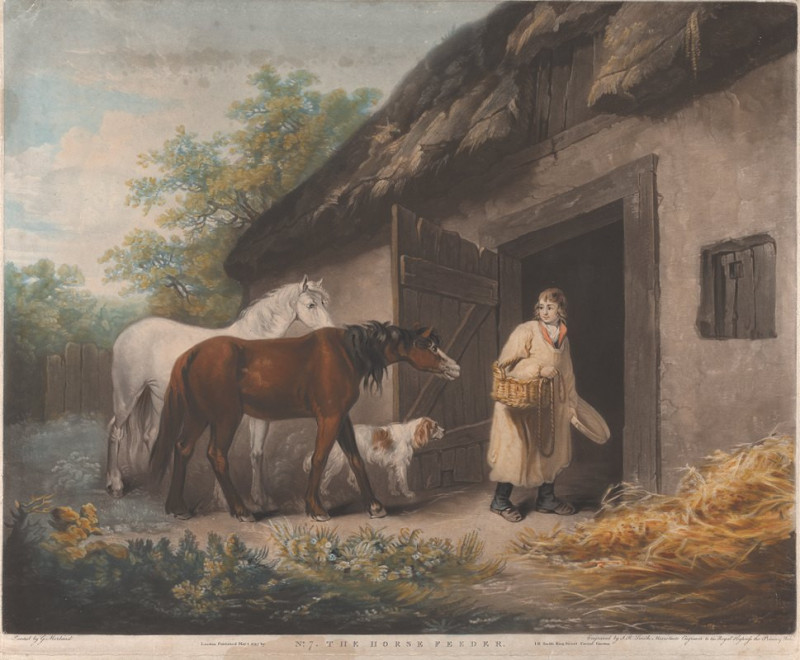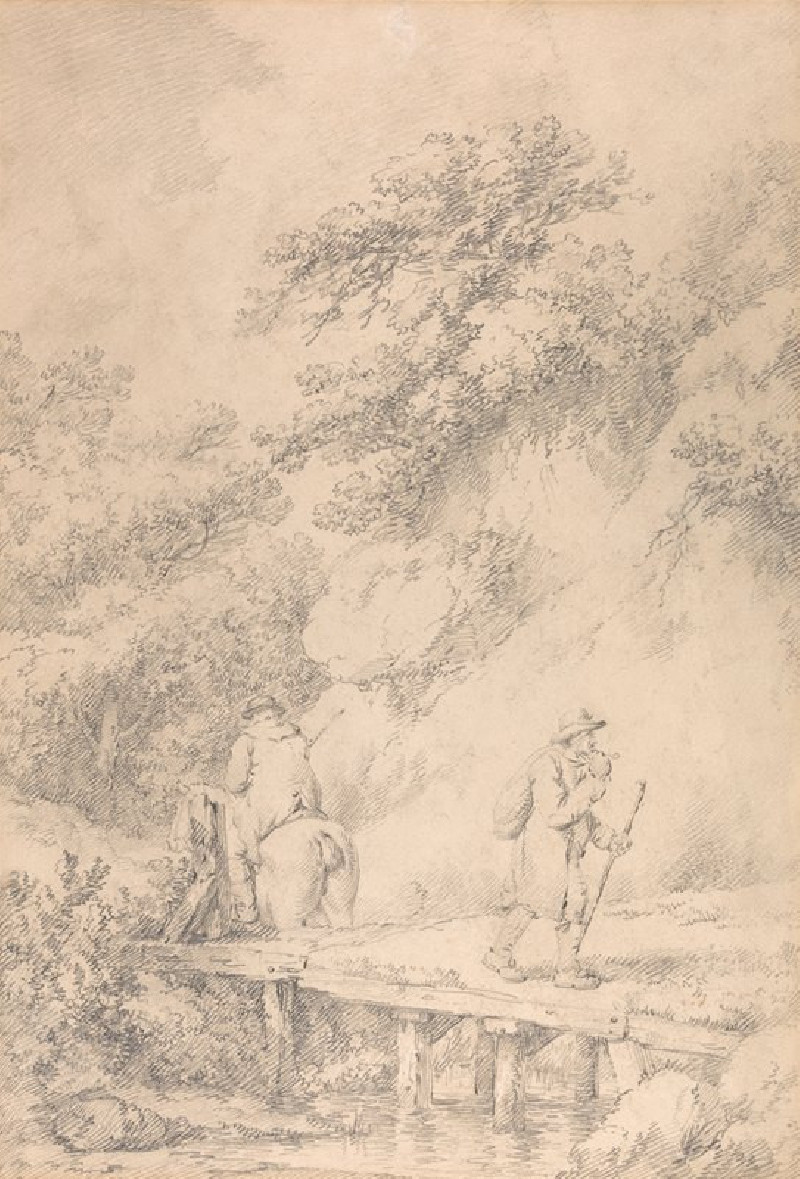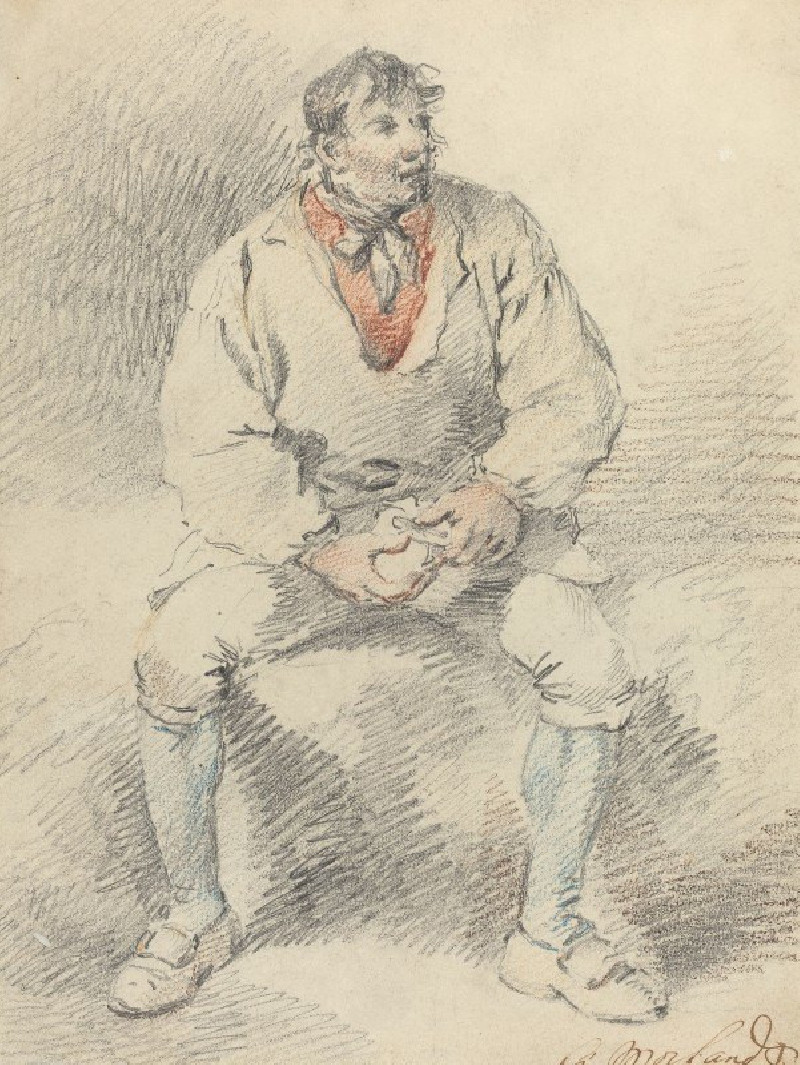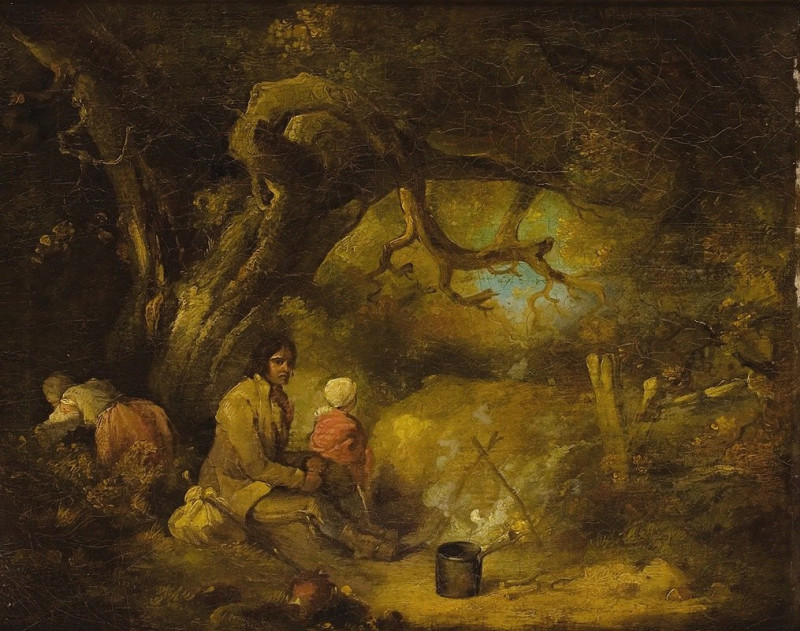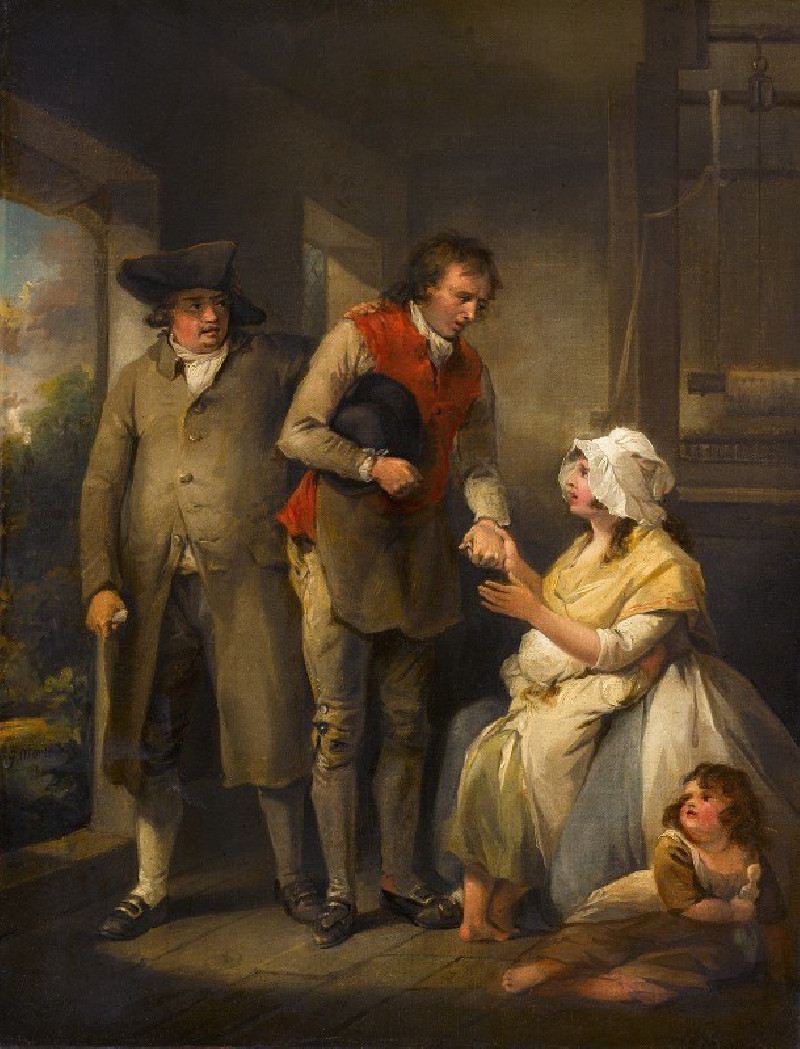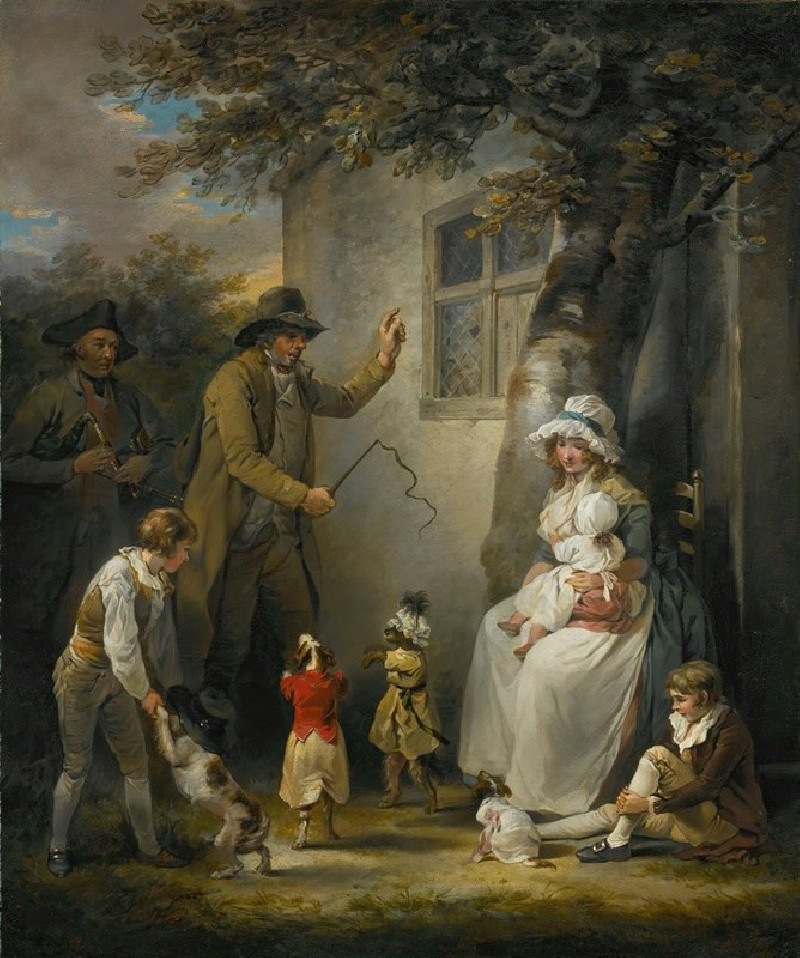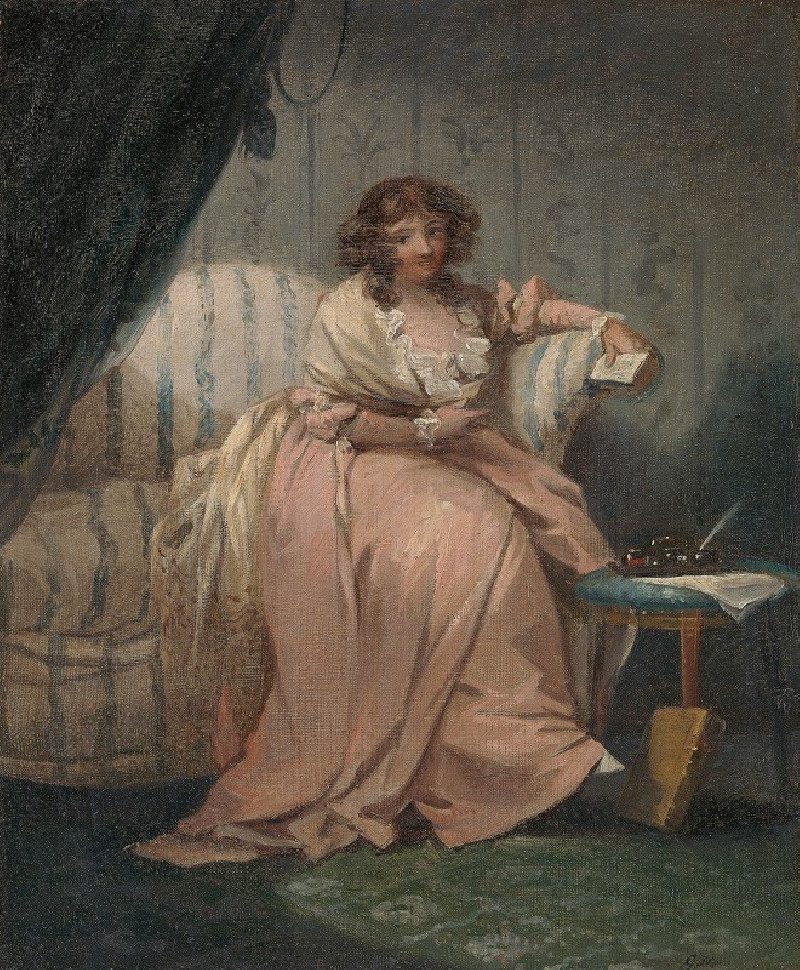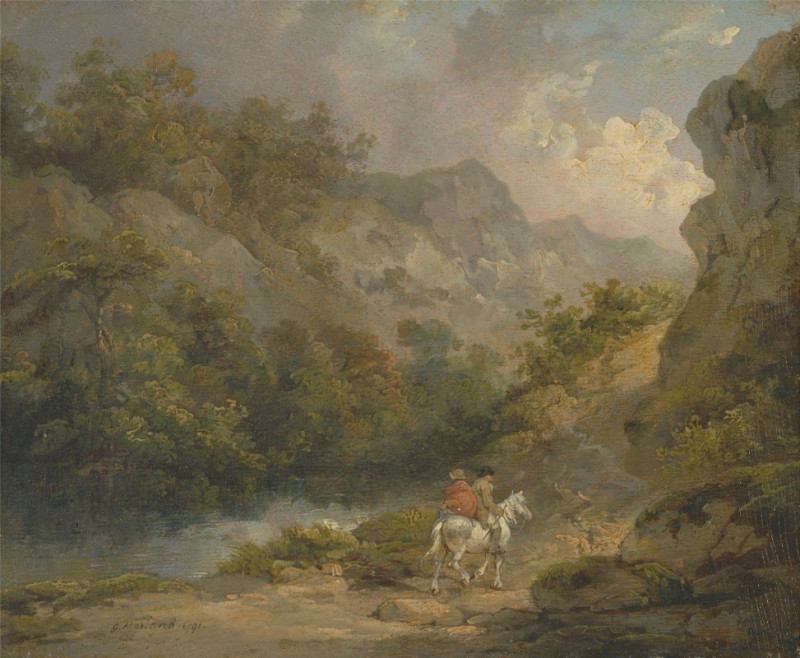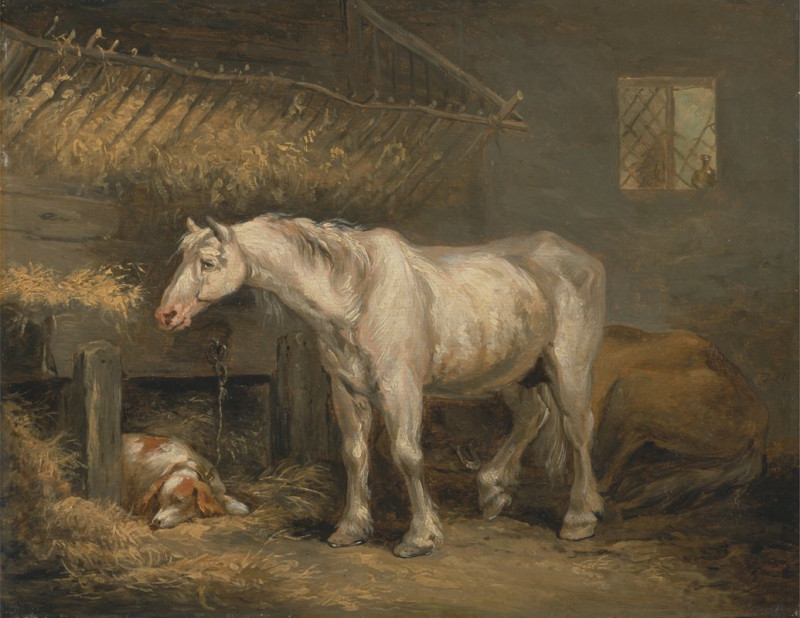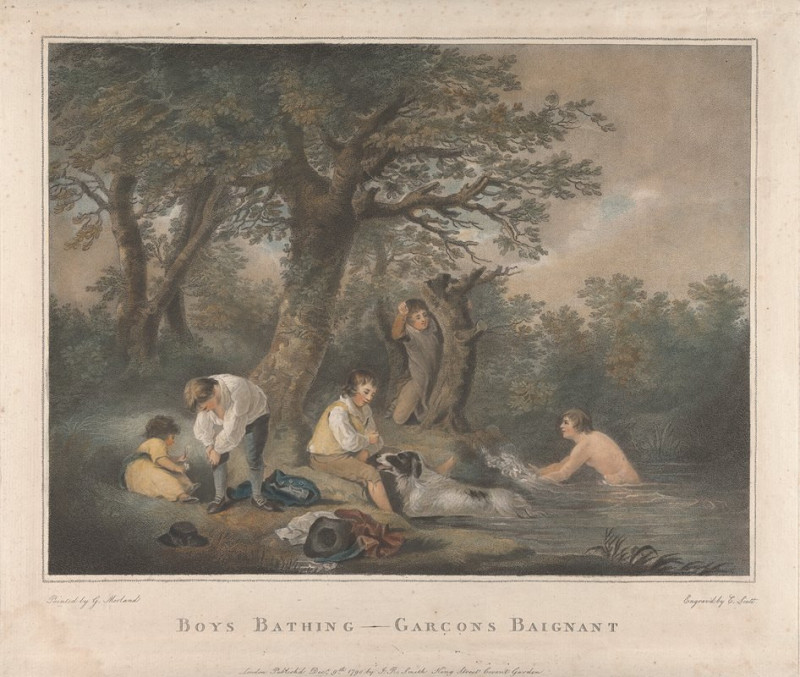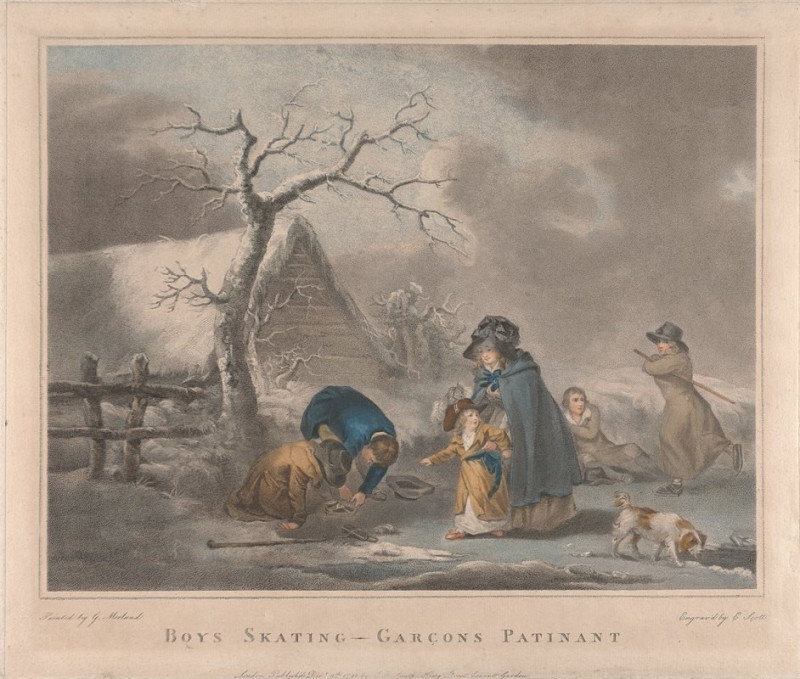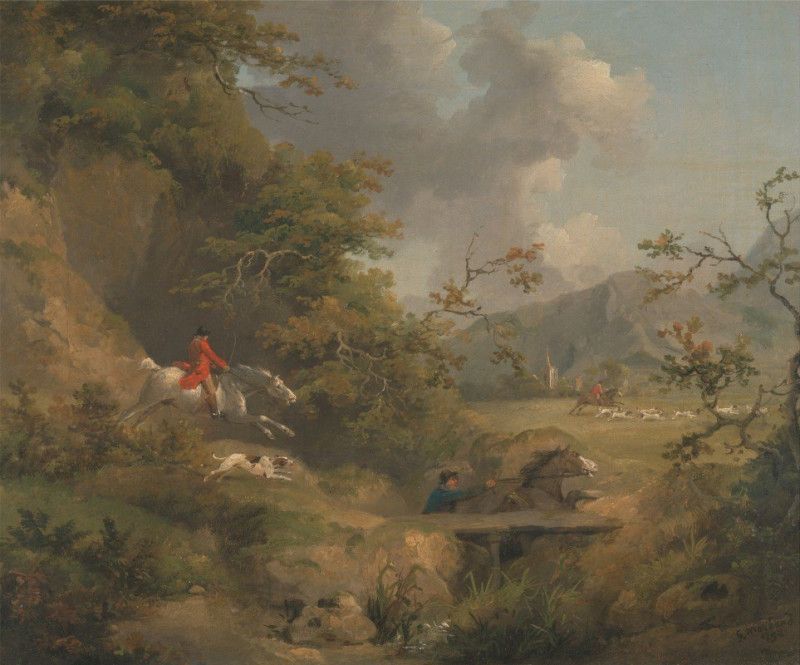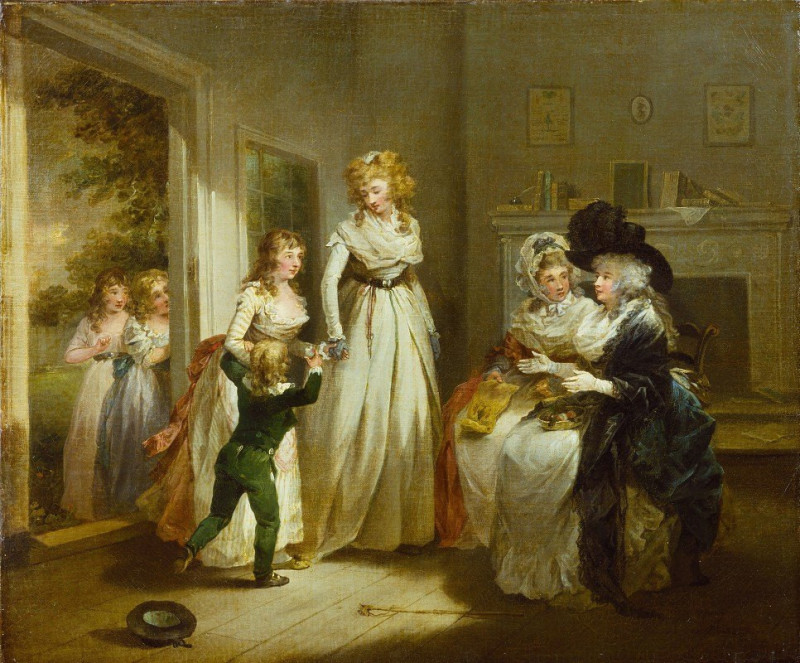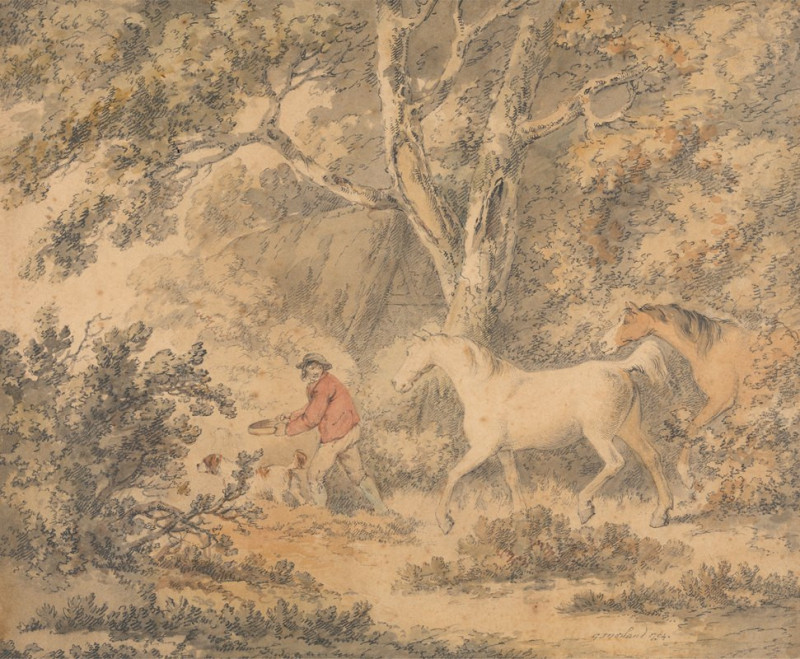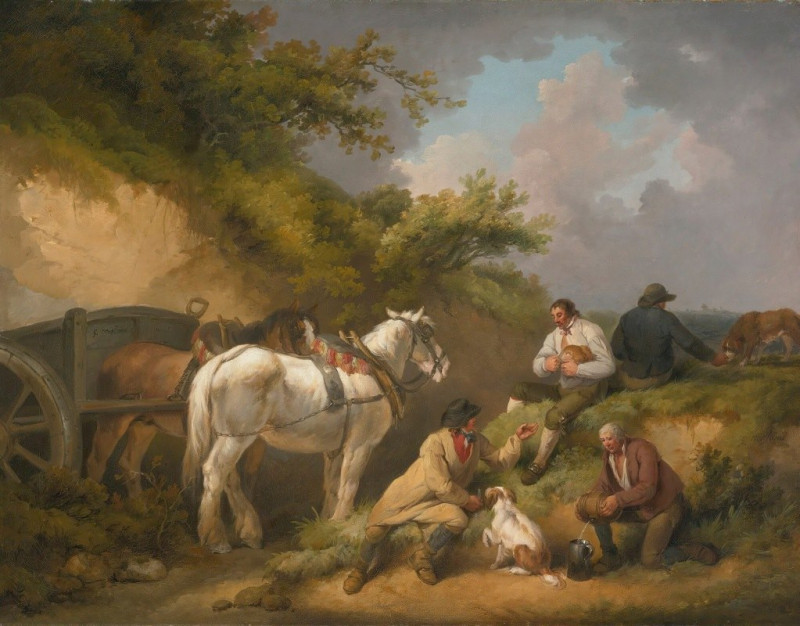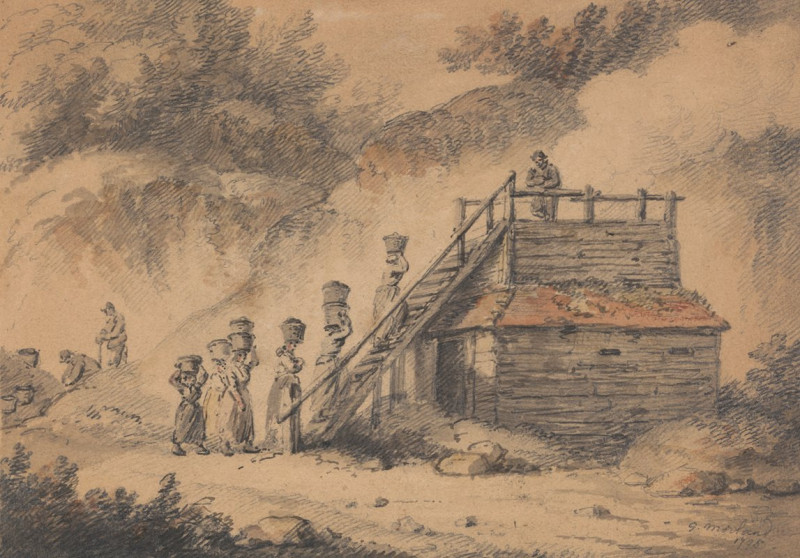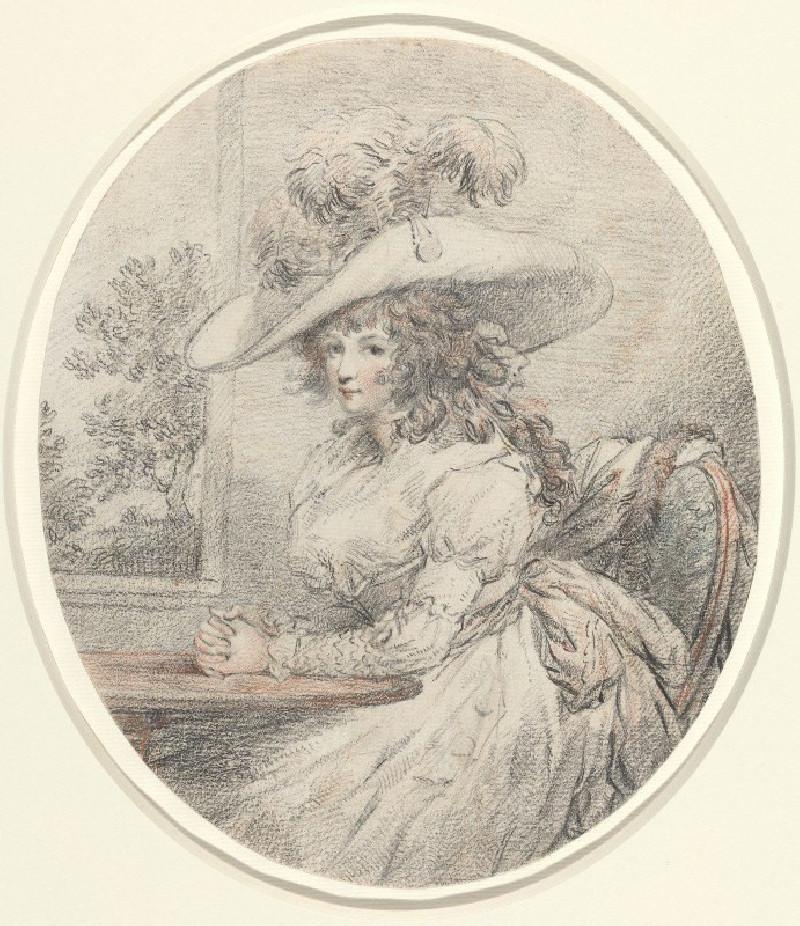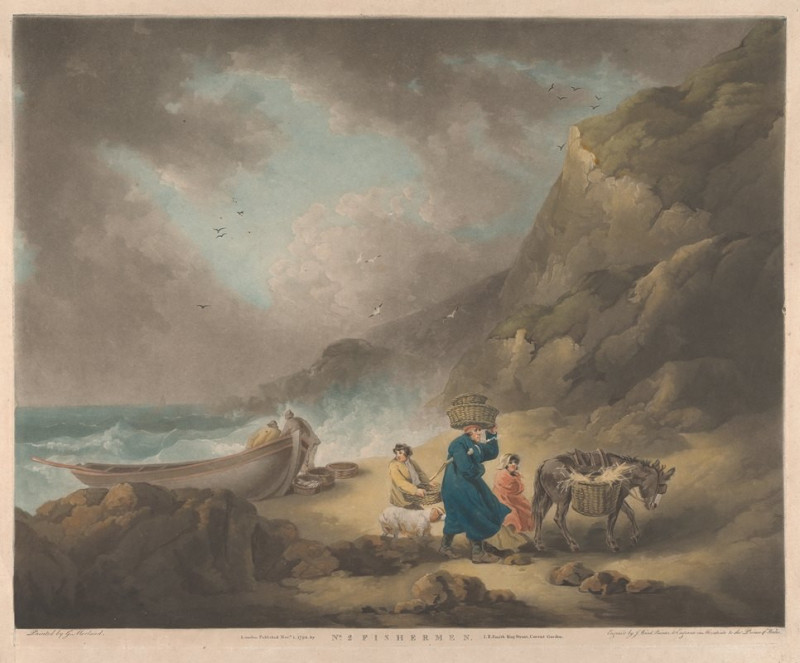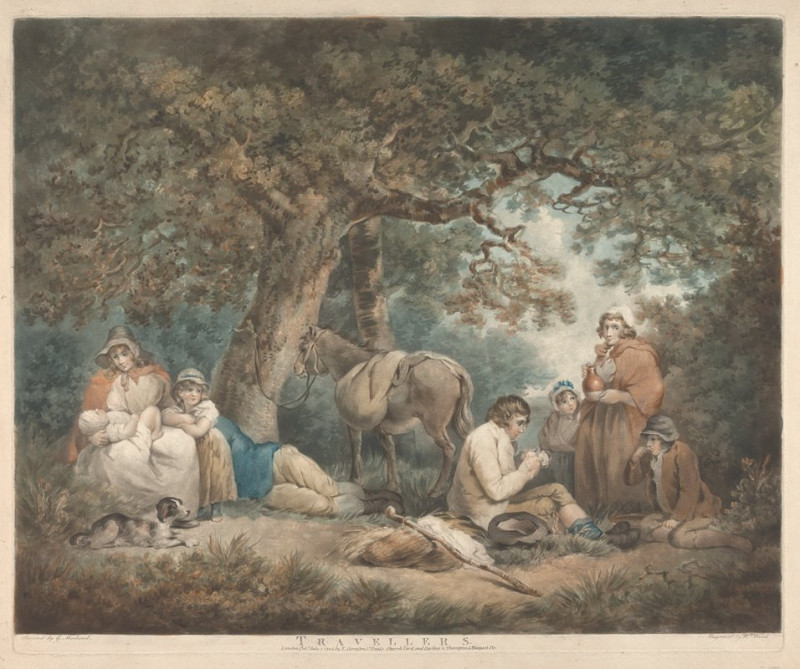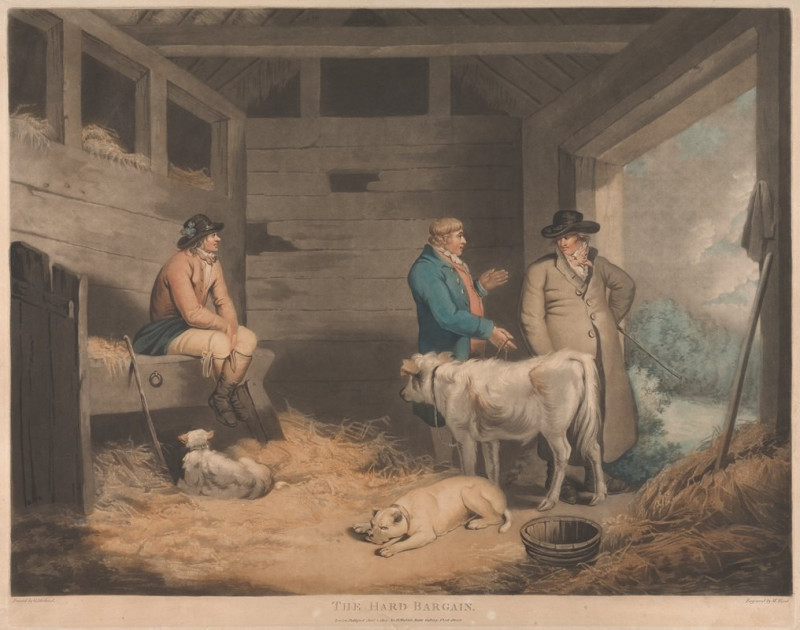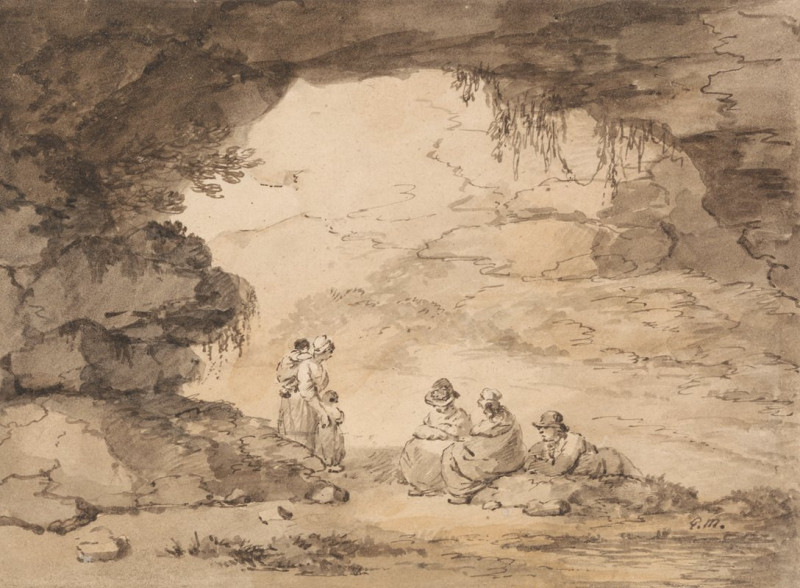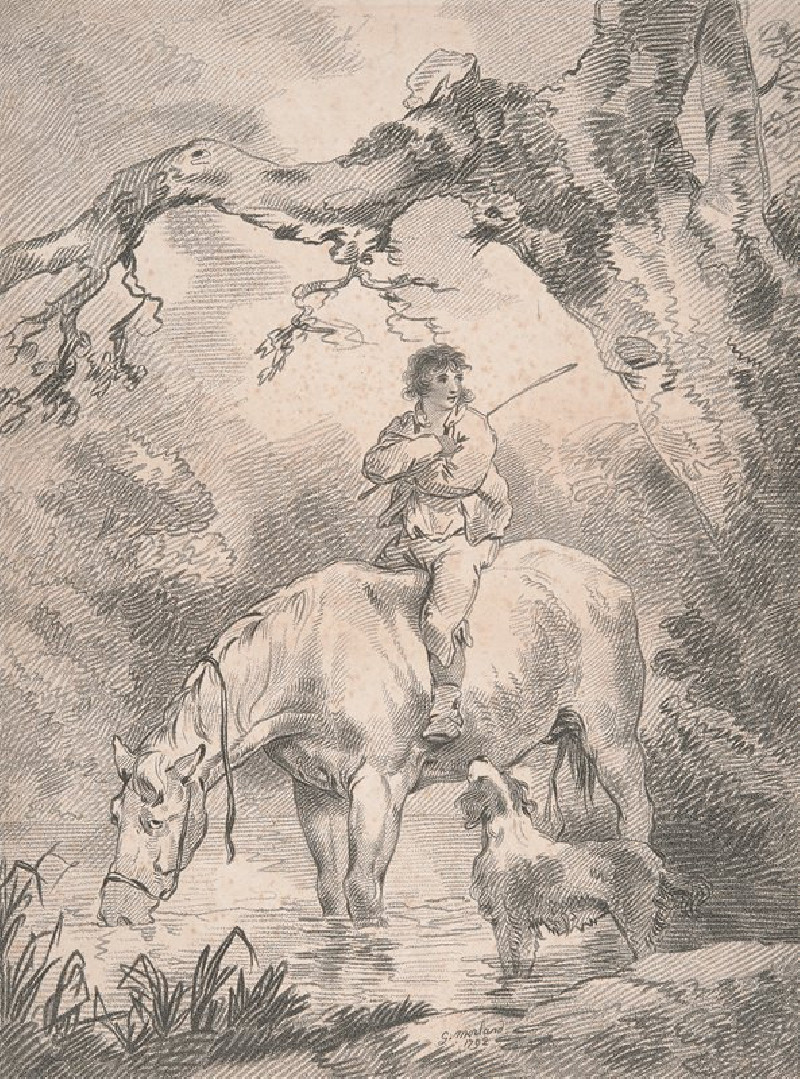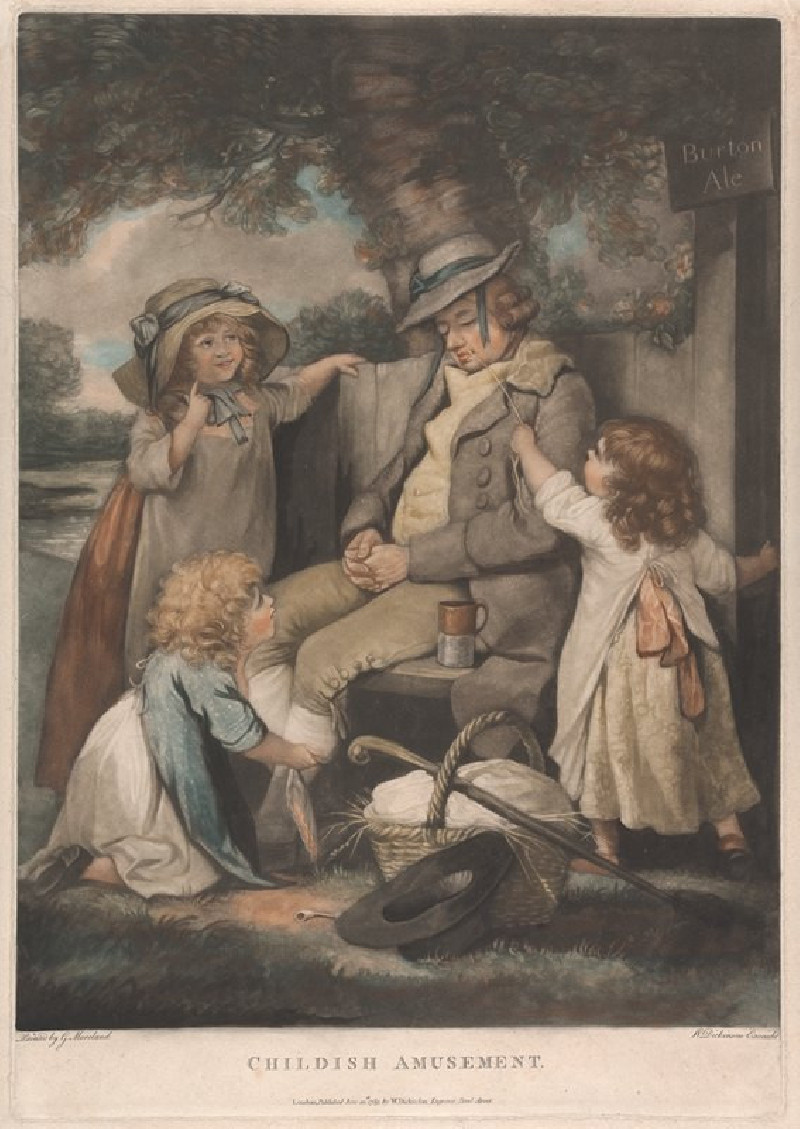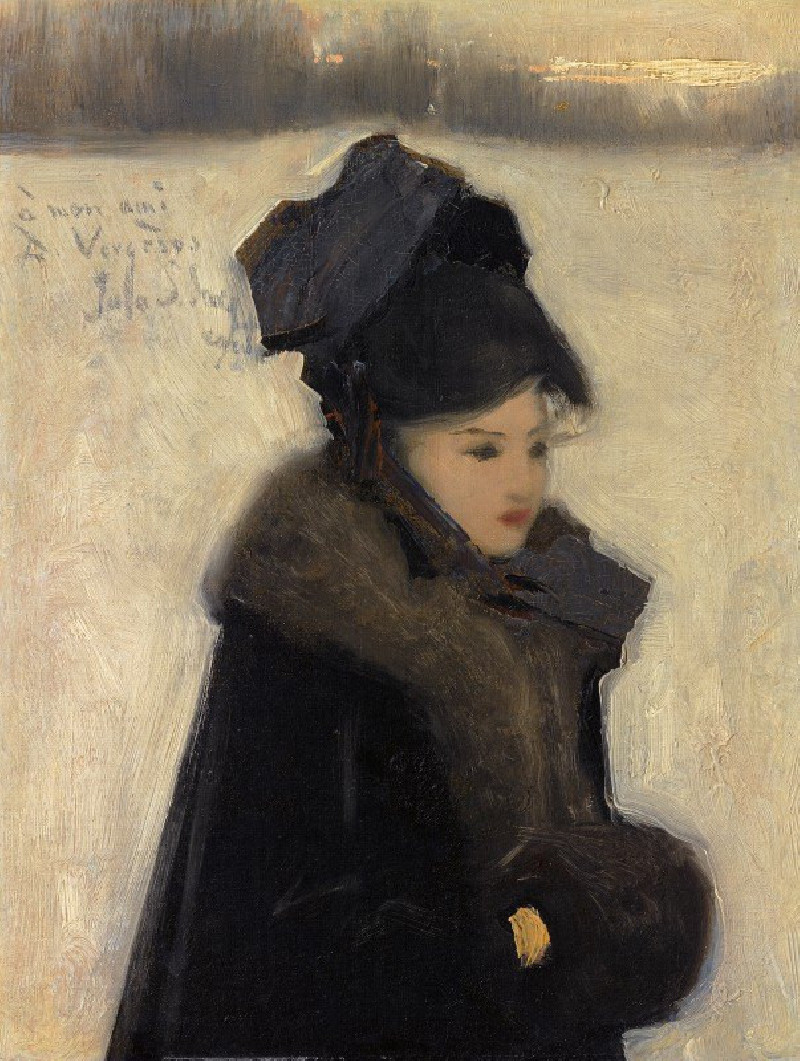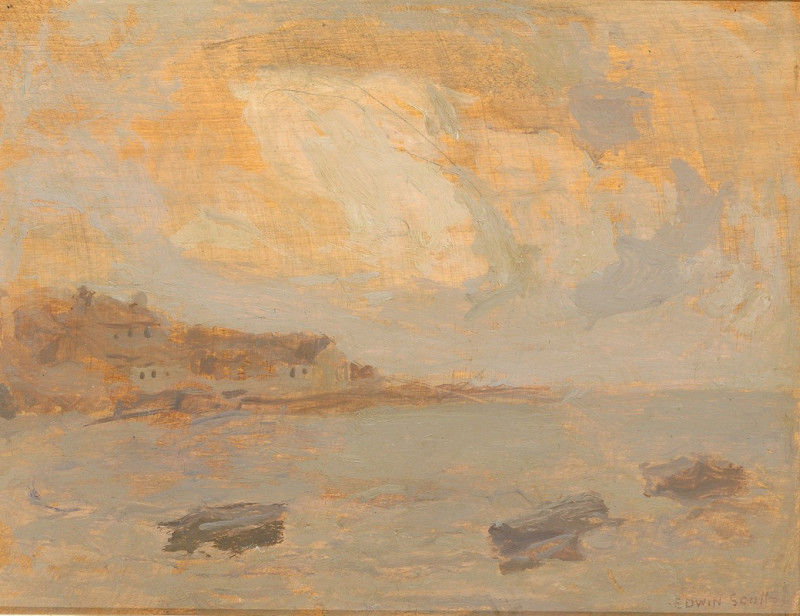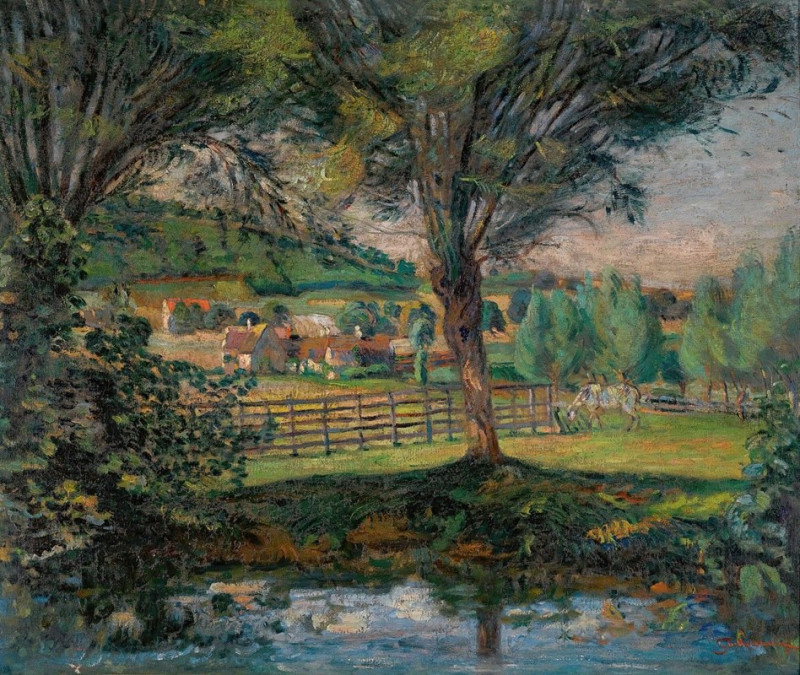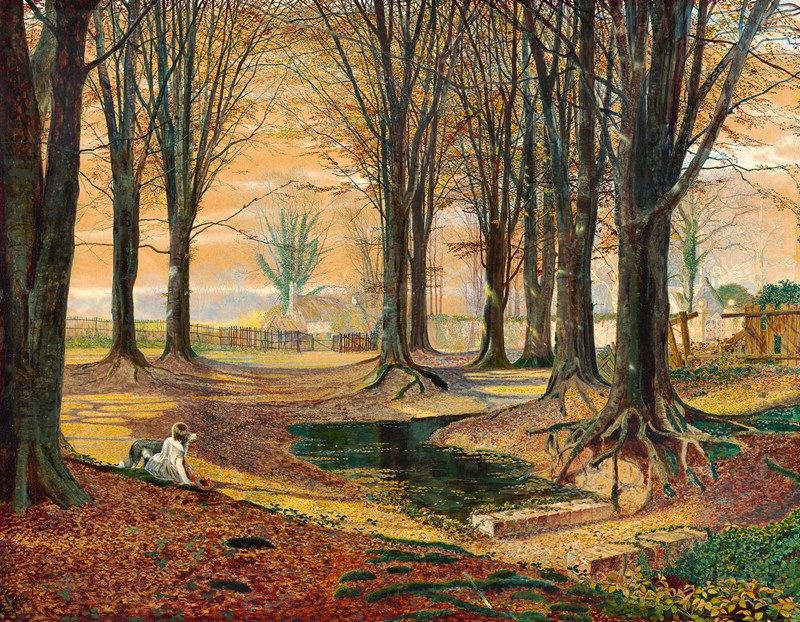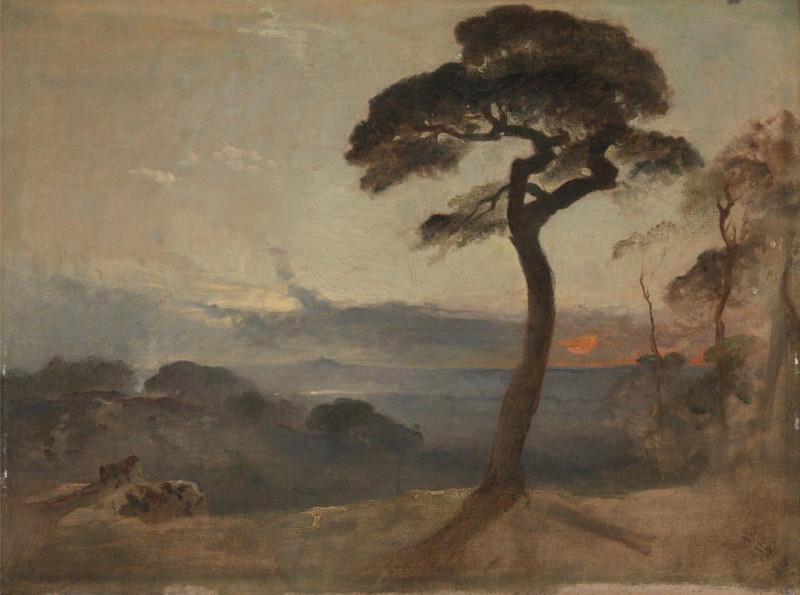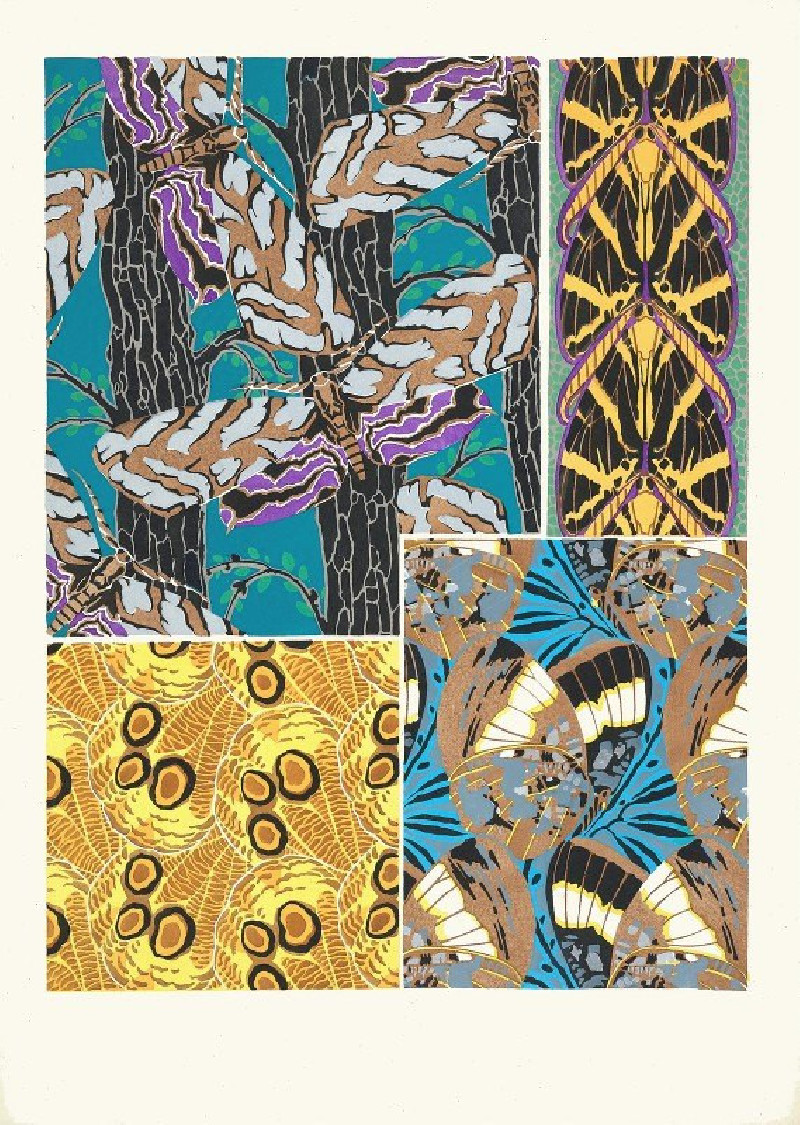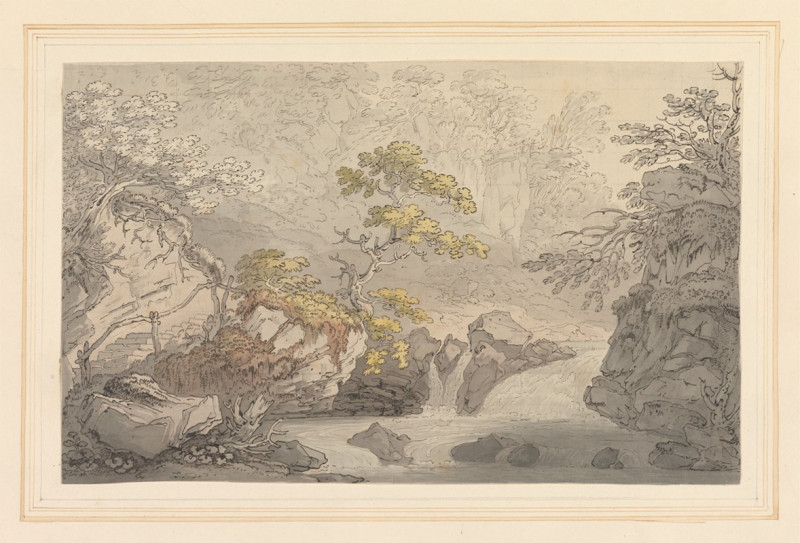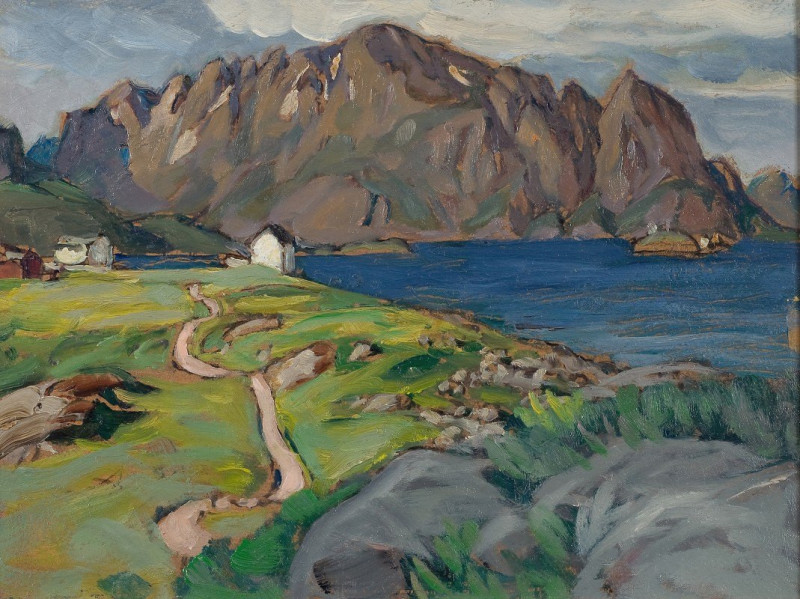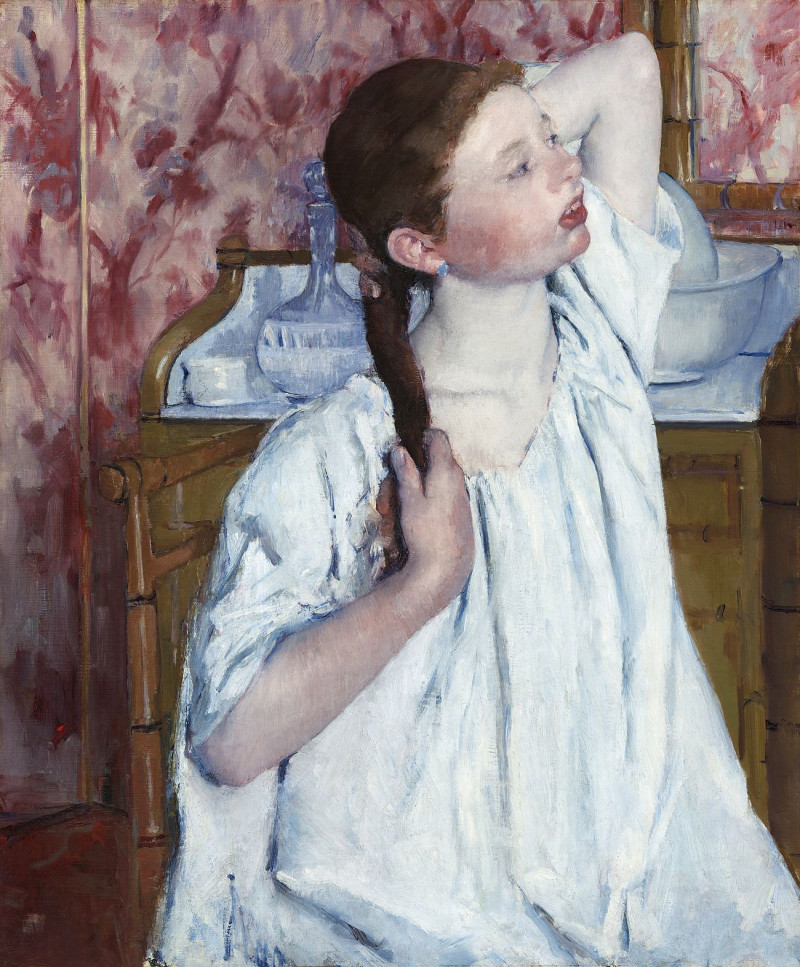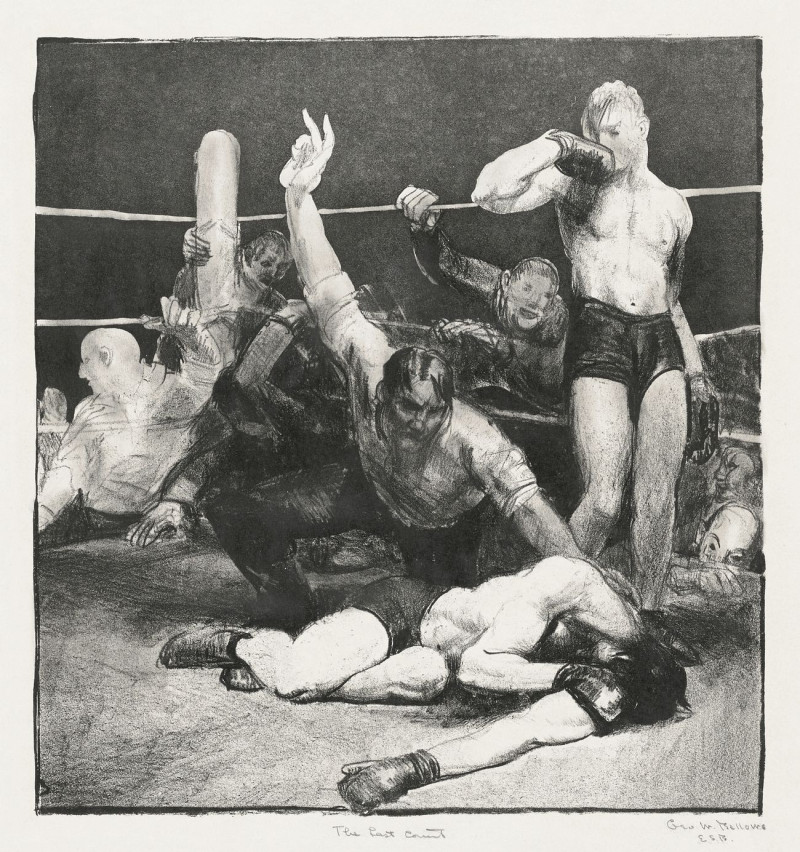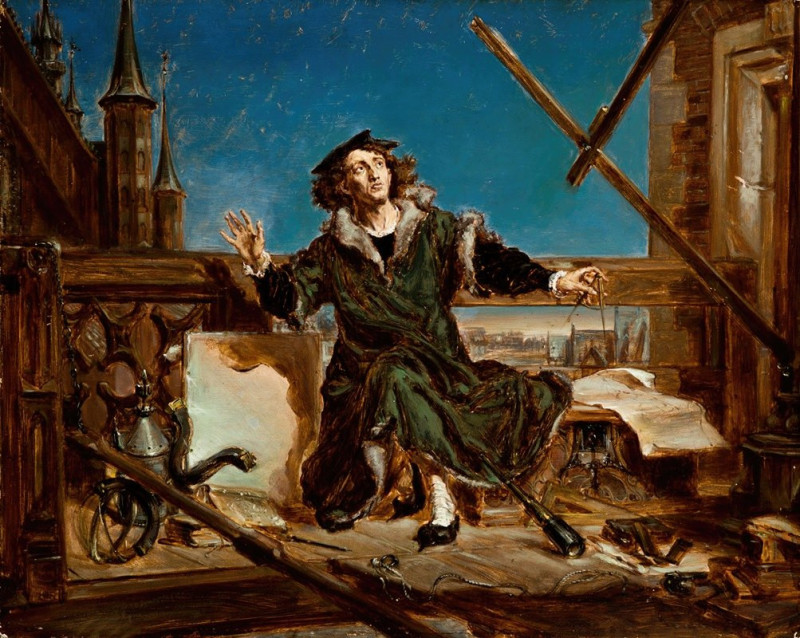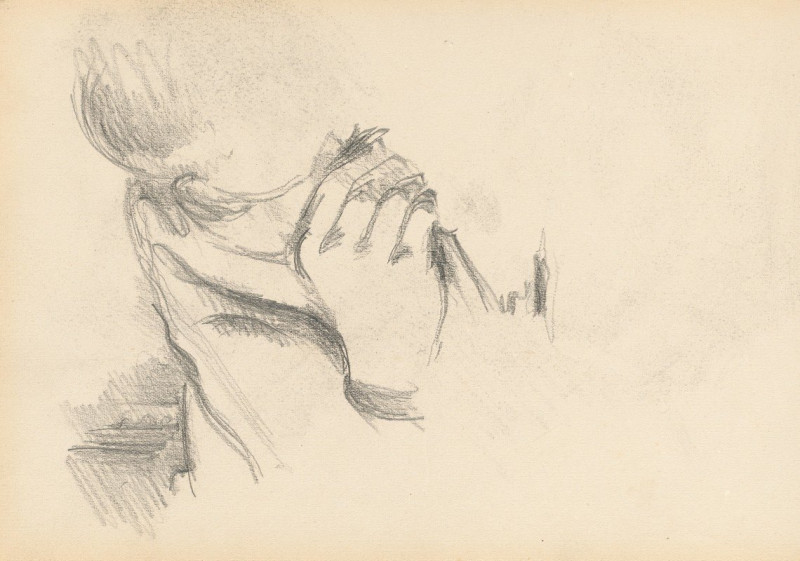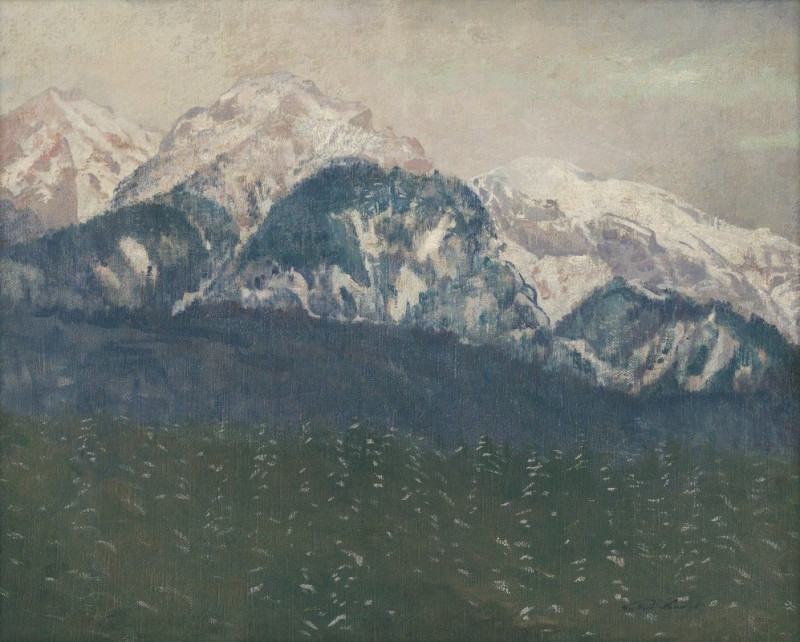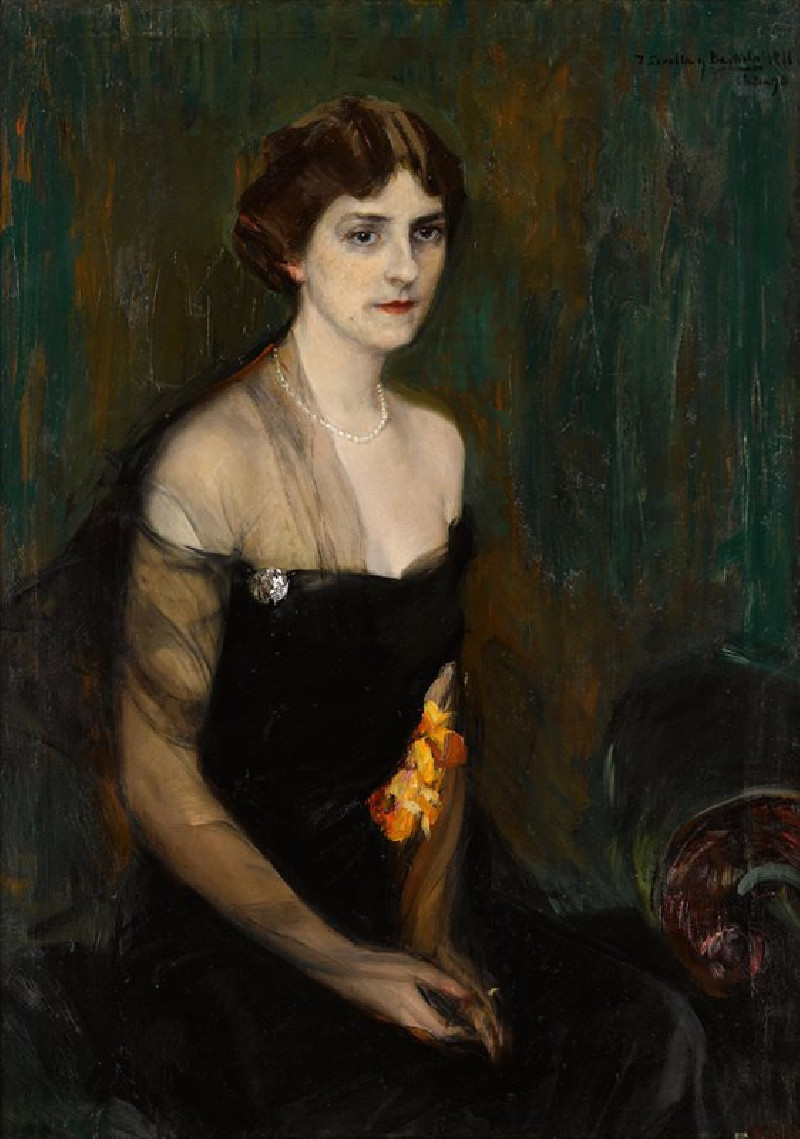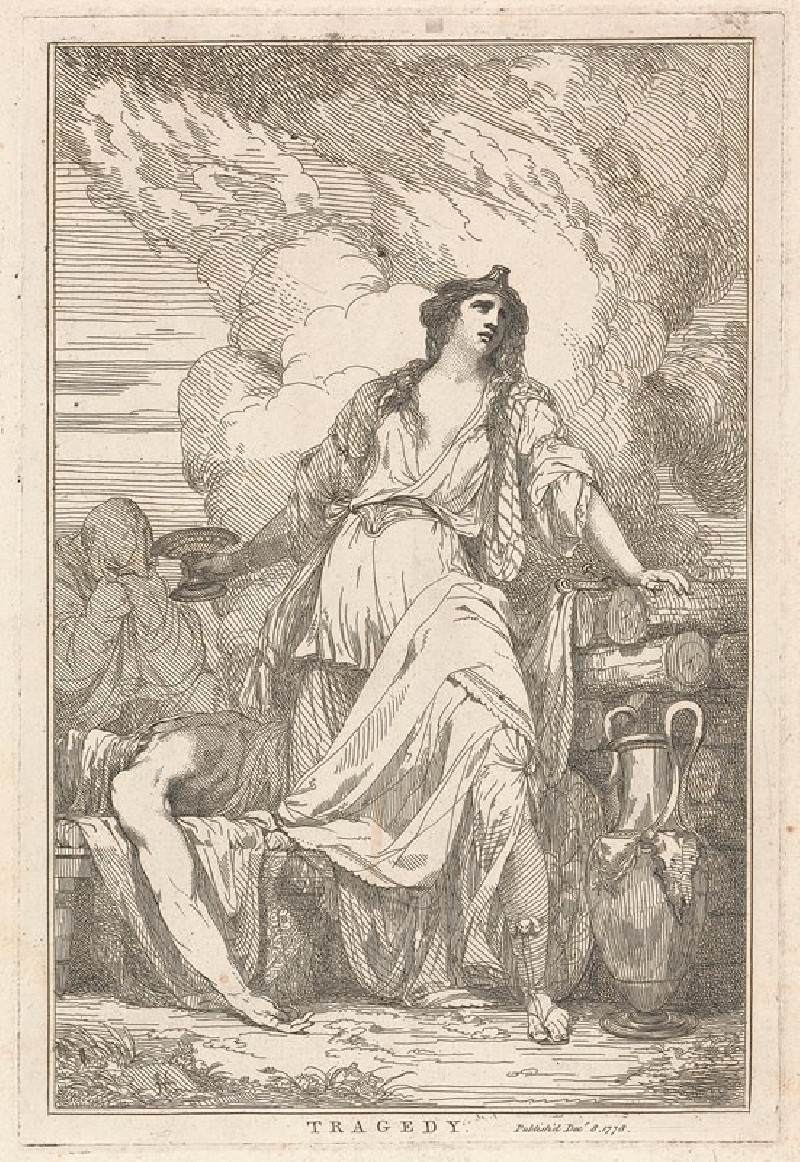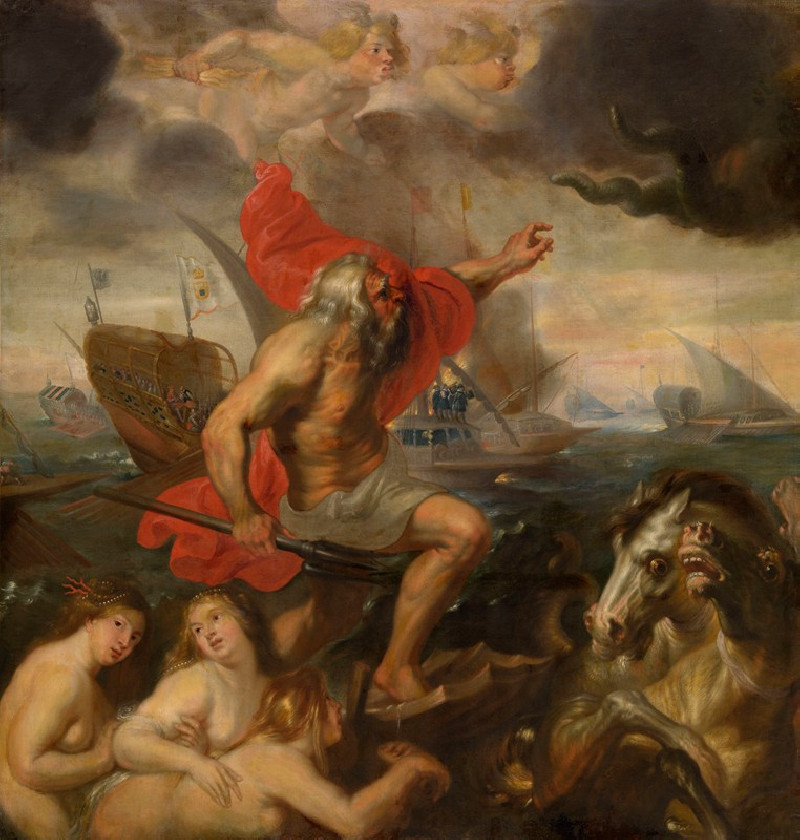Blind Man’s Buff (ca. 1788)
Technique: Giclée quality print
Recommended by our customers
More about this artwork
George Morland, an English painter known for his idyllic depictions of rural scenes, presents a playful moment in his work "Blind Man’s Buff" from around 1788. This painting captures the joy and innocence of childhood through a lively game of blind man's buff, set in a verdant forest clearing.At the center of the scene, a blindfolded girl reaches out her hands, attempting to catch one of her friends surrounding her. Her expression of playful determination contrasts with the amused and anticipatory faces of the other children. To her left, two young boys look on with smiles, one gently pushing the other forward, while another boy, with his finger to his lips, signals for quiet, adding a sense of suspense. On the right, a girl in a blue apron tugs at a boy's arm, also whispering, further enhancing the secretive, excited atmosphere.A young boy crouches in the foreground, his attention focused on the blindfolded girl, possibly ready to dash away at a moment's notice should she turn in his direction. Nearby, another child peeks over a wooden fence, and a small dog playfully interacts with some of the children, contributing to the lively, dynamic ambiance of the game.The background features a dense array of trees and foliage, with light filtering through leaves to enhance the magical, secretive feel of a forest hideaway. Morland's careful attention to the play of light and shadow not only highlights the figures but also adds depth and realism to the setting.
Delivery
Returns
George Morland (26 June 1763 – 29 October 1804) was an English painter. His early work was influenced by Francis Wheatley, but after the 1790s he came into his own style. His best compositions focus on rustic scenes: farms and hunting; smugglers and gypsies; and rich, textured landscapes informed by Dutch Golden Age painting.


